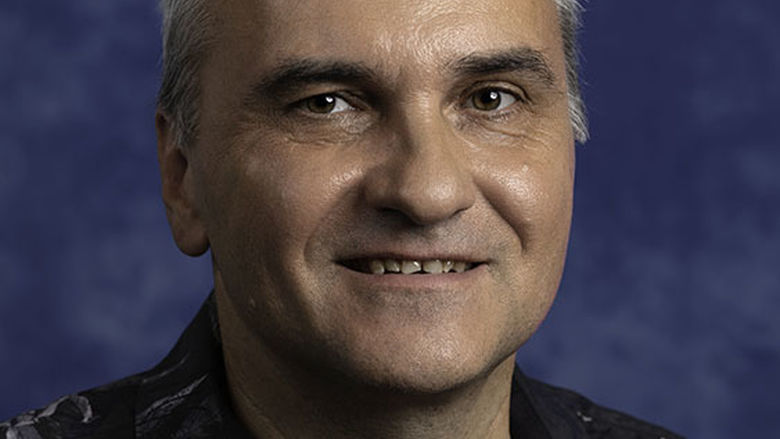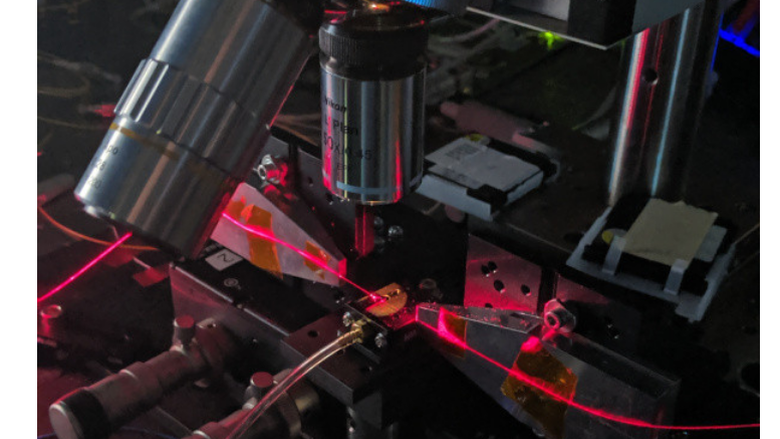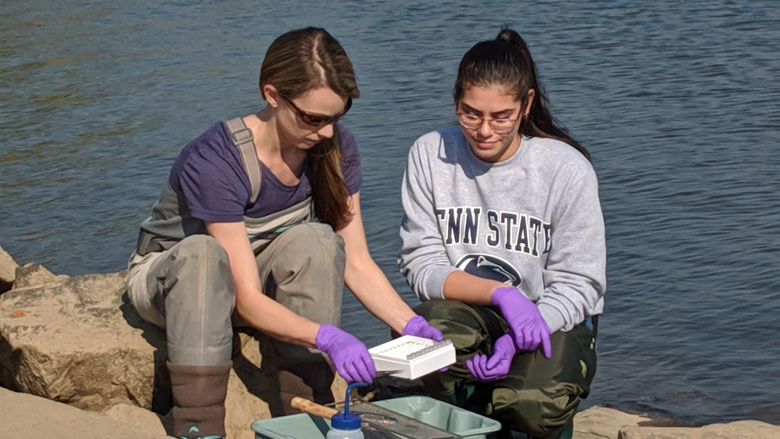
Associate Professor of History Justin Nordstrom teaches a class at Penn State Hazleton. Nordstrom has been quoted in national and international media, drawing parallels between current anti-Islam sentiment and anti-Catholicism a century ago.
Sentiments expressed against Muslims in America this fall have parallels in animosity that Catholics faced a century ago, historian Justin Nordstrom said.
Nordstrom, associate professor of history at Penn State Hazleton, researched anti-Catholic newspapers that became wildly popular for a few years before World War I.
Now with some Republican presidential candidates taking anti-Muslim stances and American Muslims wary of a backlash following mass shootings in Paris and San Bernardino, California, Nordstrom has been asked to share his scholarship with a wider audience.
The Los Angeles Times quoted him in an article on Dec. 9.
Five days later, listeners to the BBC morning news heard Nordstrom and host Dan Damon talk for 3 and a half minutes about the anti-Catholic movement then and attitudes toward Islam today.
"If I've been able to shed any light on the historical context, I'm really happy to have done that,” Nordstrom said after his interview with the BBC.
He said his students at Penn State Hazleton are surprised to learn about the slanders that Catholics once endured.
He hopes future generations of Americans will be as puzzled when looking back at the attitudes now shown toward Muslims.
In his 2006 book, "Danger on the Doorstep: Anti-Catholicism and American Print Culture in the Progressive Era," Nordstrom analyzes the war of words waged against Catholics from the small town of Aurora, Missouri.
In 1915, an Aurora newspaper strikingly named The Menace led an anti-Catholic charge and sold 1.47 million copies a week, more than the combined sales of Harper’s, McClure’s and Good Housekeeping.
The Menace lured readers with sensational revelations in the style of muckraking reporters of the Progressive era who exposed corruption in big oil, big cities and big corporations.
Unlike Upton Sinclair, who learned about the abuses of the meat-packing industry firsthand, or Ida Tarbell, who painstakingly unraveled the secrets of Standard Oil, the authors of The Menace dreamed up their stories.
Tales in The Menace of children kidnapped at convents, of priests brainwashing parishioners and of Catholics infiltrating legislatures and plotting armed takeovers were as unfounded as they were titillating.
Nonetheless, The Menace tapped into anti-Catholic sentiment that arrived in America with the first settlers.
Colonists taunted Catholics with Pope-day celebrations.
The Know-Nothing Party gained strength before the Civil War by touting a single issue -- a ban on Catholics from holding office.
The Menace and other anti-Catholic weeklies with six-figure sales like Watson's Magazine of Thompson, Georgia, and The Yellow Jacket of Moravian Falls, North Carolina, published in counties with few Catholics.
Their small-town readers took solace in articles that praised farming, patriotic values and other populist themes that the writers intertwined with their anti-Catholic diatribes.
Nordstrom notices similarities between anti-Catholics then and anti-Muslims now. Both doubted the patriotism of religious followers, claiming that the followers can’t be a loyal Catholic or Muslim and still be a loyal American.
"Fill in the blank, depending on the time,” Nordstrom said.
Current proposals to put Muslims into a special database or to issue them identification cards, however, go beyond what the anti-Catholics called for a century ago, Nordstrom said.
Then or now, the people maligning Catholics or Muslims strayed from the American tradition, protected by the First Amendment, of allowing religious freedom.
The Menace and newspapers of the same ilk started losing circulation at the start of World War I.
Catholics defended their beliefs in print and in court against claims raised by The Menace.
War increased the costs of printing and delivering the papers. The nation turned its attention to a real threat abroad rather than the imaginary, internal threat that the papers described.
In 1919, the printing plant of The Menace burned, and the newspaper never recovered.
By 1960, the popular appeal of The Menace long had been extinguished when John F. Kennedy, a Catholic, won the presidency.
More recently, the Catholic Church again received unfavorable media coverage. Priests were accused of sexual abuse against children and the church hierarchy of coverups.
In contrast with the charges raised by The Menace, however, the news reports about the contemporary scandal “seem frighteningly germane,” Nordstrom writes.
When Pope Francis visited the United States in September, huge crowds gathered to hear him, and the media provided upbeat coverage.
At the invitation of the Speaker of the House, the pope spoke to Congress – a clear sign that Americans and their leaders have no fear of a Catholic plot against their government.
The Menace and the other anti-Catholic newspapers put forth a view that Americans couldn't protect national security and their tradition of religious tolerance.
It was “as if they were mutually exclusive,” Nordstrom said.
"The reason they proved short lived is Americans realized you can have both,” he said. “You can create a strong country but do so without sacrificing traditions of religious freedom.”





